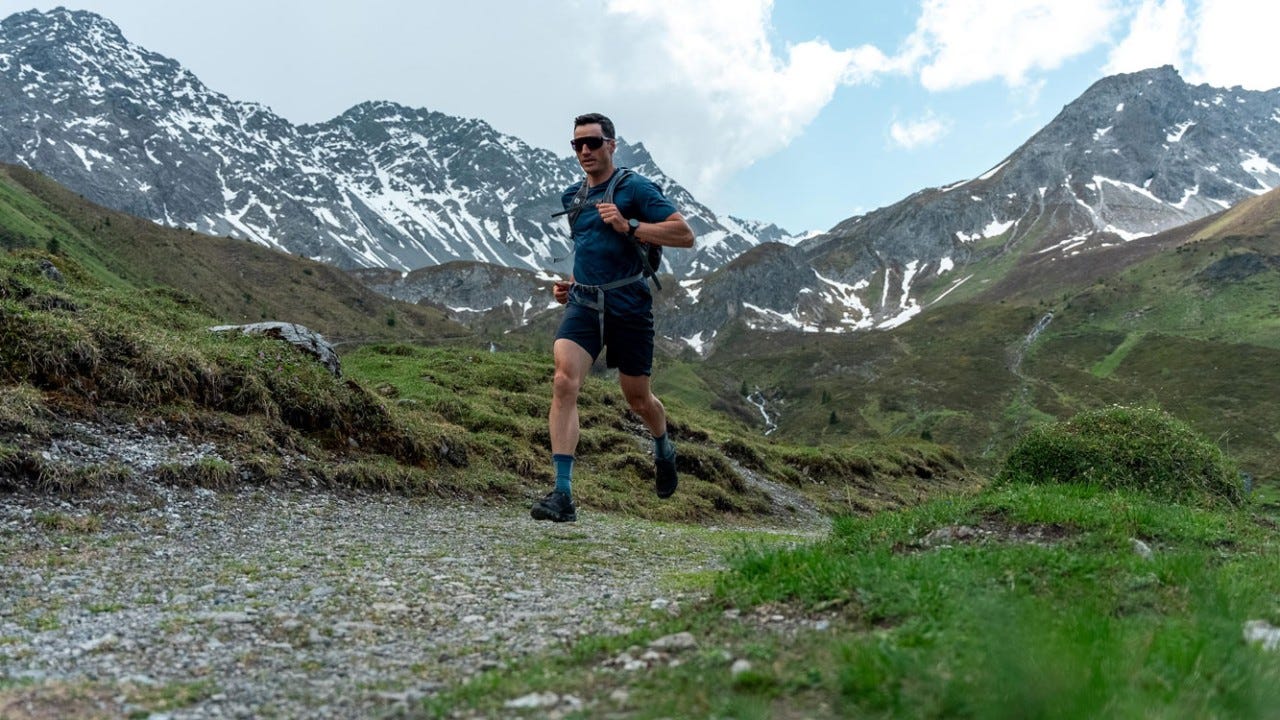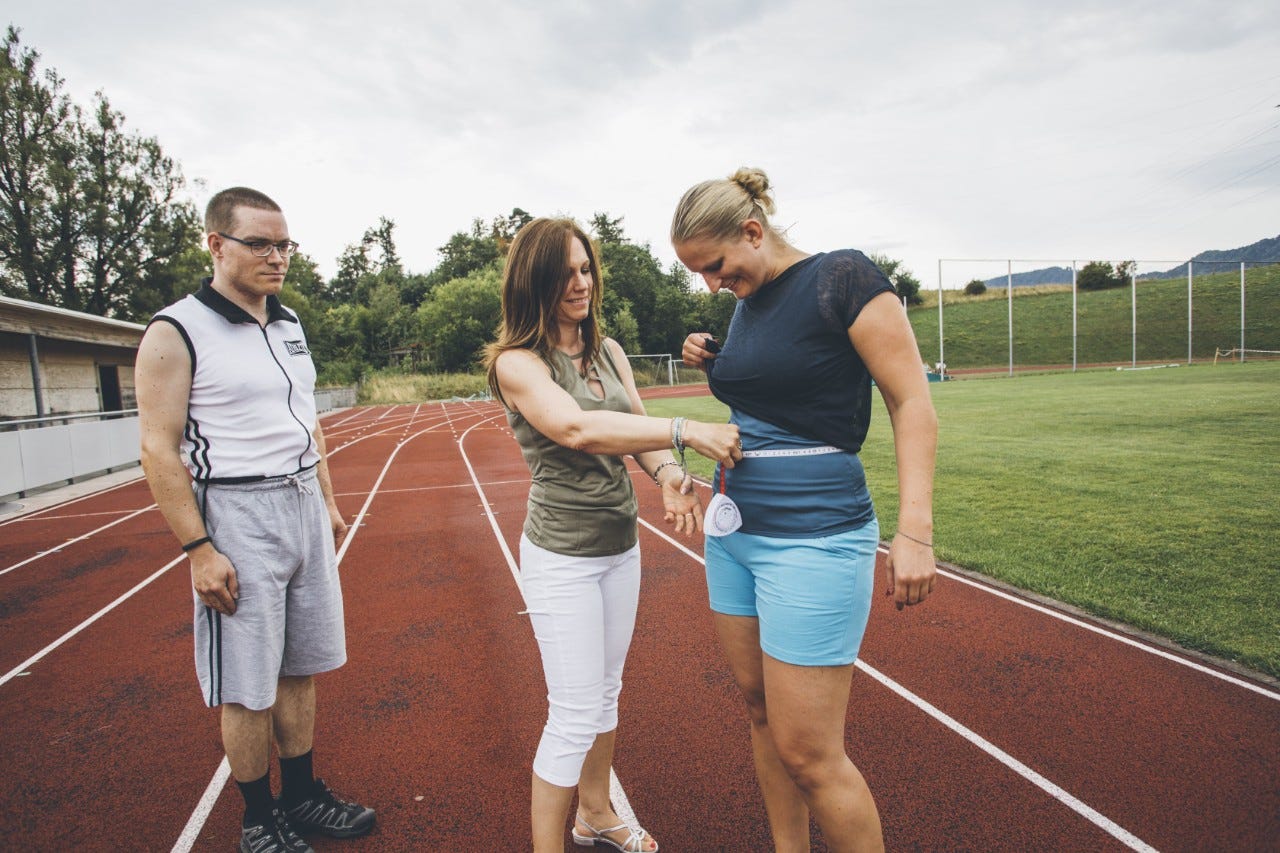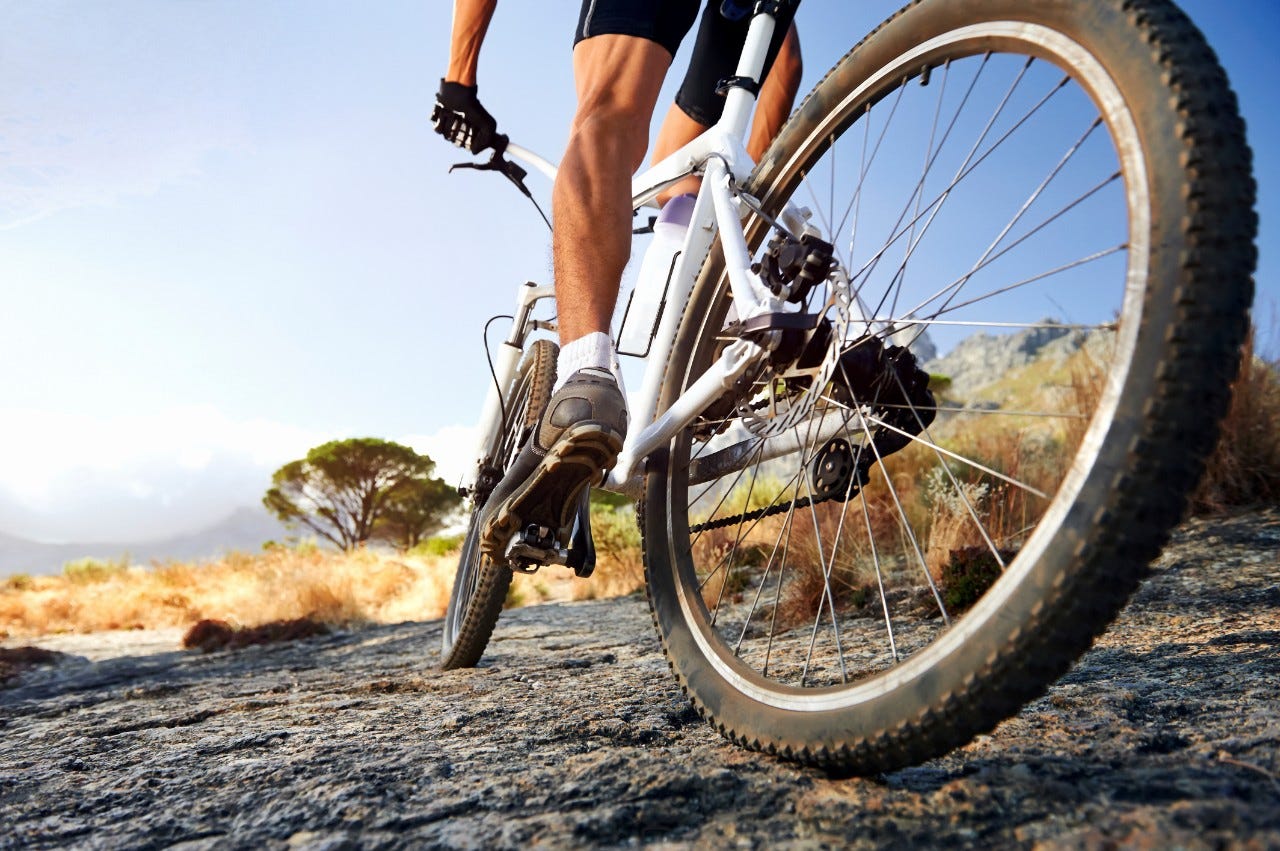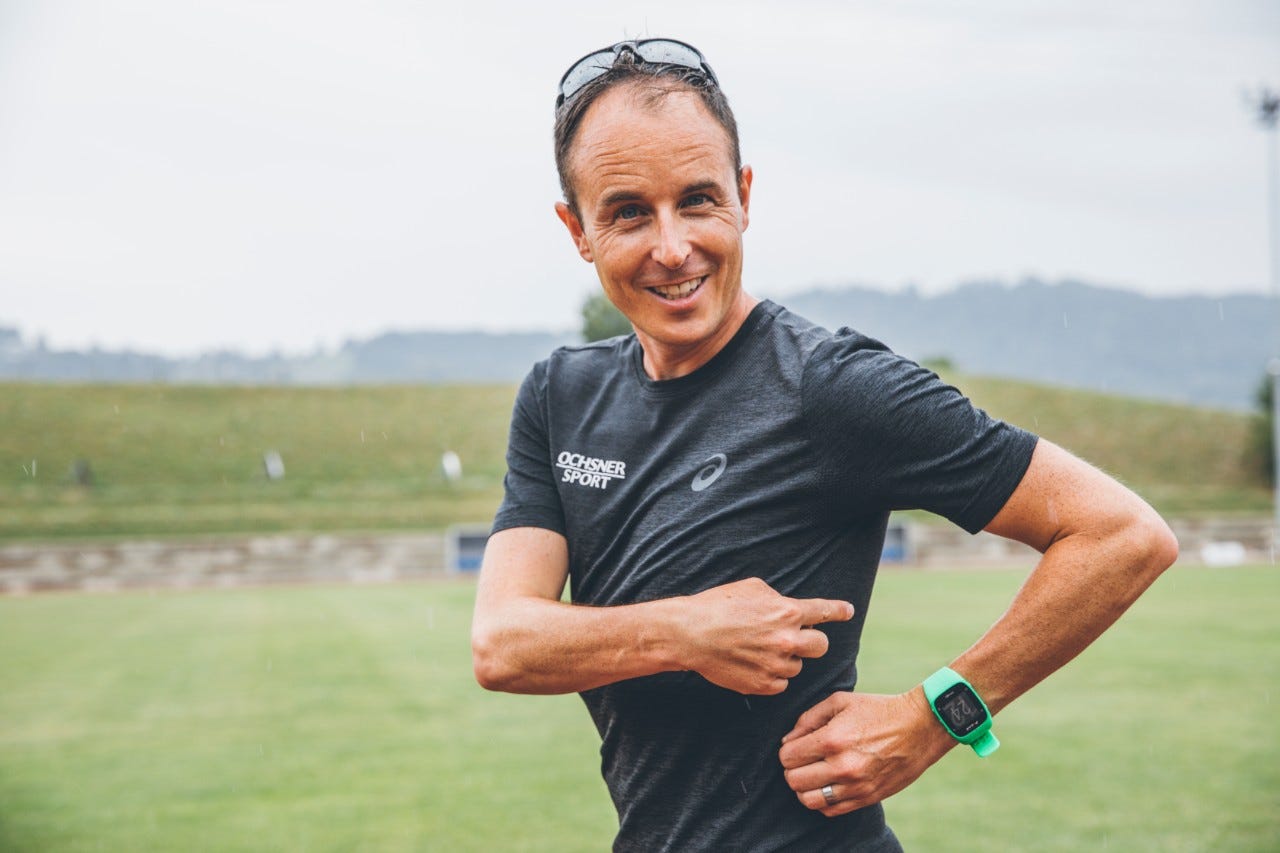Trailrunning: Tipps und Tricks
Der Outdoor-Trend Trailrunning kombiniert Ausdauer- und Krafttraining mit einem Naturerlebnis. Das Laufen abseits geteerter Strassen kann aber auch seine Tücken haben.

Sportliche Herausforderung weit weg vom Alltag: Trailrunning ist die perfekte Kombination von Wandern und Joggen. Ein Hobby also für durchtrainierte Läufer, die rennend steile Berggipfel bezwingen und über schmale Grate balancieren? Nein, sagt Trailrunning-Experte und Profilangläufer Jonas Baumann. «Unter Trailrunning versteht man schlicht das Laufen abseits des Asphalts. Das muss nicht zwingend in hochalpinem Gelände sein, Feld- und Waldwege gehören ebenso dazu. Trailrunning ist für alle geeignet, egal ob jung oder alt.»
In anderen Ländern bereits etabliert, kommt der Outdoor-Trend langsam auch in der Schweiz an. Immer mehr Menschen schätzen die vielseitige Bewegungsform draussen in der Natur und abseits geteerter Strassen. Was Trailrunning nebst dem Naturerlebnis vom «normalen» Joggen unterscheidet, ist der unebene und mit Schwierigkeiten gespickte Untergrund. Trailrunning erfordert – und fördert – nicht nur Ausdauer, sondern auch Stabilität, Kraft, Koordination und Reaktionsfähigkeit. Man läuft möglichst geschickt und ausdauernd auf teils schmalen, unebenen, steinigen, verwurzelten Pfaden. In der Ebene, bergauf oder bergab. Trailrunning-Strecken sind spielerisch und abwechslungsreich.
Wie fange ich mit Trailrunning an?
Laufen im freien Gelände birgt mehr Herausforderungen als Laufen auf der Quartierstrasse. Deshalb ist es für Trailrunning-Anfänger:innen besonders empfehlenswert, sich langsam an den Sport heranzutasten. Jonas Baumann rät, das Tempo und die Route seinen Fähigkeiten und seiner Ausdauer anzupassen. Wer im Gelände noch nicht geübt ist, sollte nicht direkt mit technisch schwierigen Wegen beginnen. «Steigern kann man sich immer.»
Dasselbe gilt für die Länge der Tour: Mit kürzeren Routen zu beginnen, ist eine weise Entscheidung. Im Video gibt Jonas Baumann Tipps für Einsteigerinnen und Einsteiger. Welche Ausrüstung wird benötigt? Wie bereitet man sich vor? Und welches ist die geeignete Technik für Trailrunning?
Vielfältiger Trainingsplan
Wer auf Trails unterwegs ist, benötigt Ausdauer, Kraft sowie Balance und Koordination. Dementsprechend gestaltet sich der Trainingsplan. Mindestens eine bis zwei Laufeinheiten pro Woche sind Voraussetzung für ein genussvolles Trailrunning-Erlebnis, wobei andere Ausdauersportarten wie Rennvelofahren das Konditionstraining ergänzen können. Umfang und Distanz hängen vom individuellen Trainingsstand ab.
Um die Trailrunning-Technik zu verbessern, eignen sich Laufschulübungen einmal pro Woche. Etwa der Kniehebelauf, bei dem auf einer Strecke von etwa 20 Metern abwechselnd die Knie hochgezogen werden. Die Arme schwingen aktiv mit. Im Internet findet man zahlreiche Anleitungen für weitere Laufschulübungen. Nicht zu vernachlässigen sind Rumpfstabilität für das Gleichgewicht und Beinkraft: Übungen wie Unterarmstütze, Ausfallschritte (Lunges) und Kniebeugen (Squats) gehören zum Training dazu. Auch spezifische Übungen für starke Knie sind empfehlenswert.
Die richtige Ausrüstung für Trailrunning
Wann brauche ich einen Trailrunning-Schuh?
Ein spezifischer Trailrunning-Schuh ist unabdingbar. Gerade wer gerne auf Bergpfaden läuft, benötigt einen stabilen Schuh mit einem guten Profil und allenfalls einem Zehenschutz. Sind vor allem sanftere Trails und Waldpfade das bevorzugte Gelände, darf der Schuh auch etwas leichter sein. So oder so ist ein Trailrunning-Schuh weniger gedämpft und direkter als ein herkömmlicher Joggingschuh, damit er im Gelände mehr Sicherheit und Halt bietet.
Bei der Frage, ob ein Trailrunning-Schuh wasserfest sein sollte, scheiden sich die Geister. Der Vorteil von wasserfesten Laufschuhen: Das Wasser dringt nicht über den Stoff in den Schuh ein. Der Nachteil: Wasser, das von oben in den Schuh rinnt, kann nicht wieder austreten. Am besten probiert man selbst aus, was den eigenen Bedürfnissen entspricht.
Was sind Trailrunning-Stöcke?
Führt eine Strecke über viele Höhenmeter, können leichte Trailrunning-Stöcke ein geeignetes Hilfsmittel sein – bergab wie bergauf. Im Aufstieg verhilft der Stockeinsatz zu mehr Kraft, talwärts entlastet er die Beinmuskulatur und die Gelenke. Gleich wie Wander- und Trekkingstöcke bestehen Trailrunning-Stöcke aus Aluminium oder, um Gewicht zu sparen, aus Carbon. Die meisten Stöcke lassen sich wie eine Zeltstange zusammenfalten und haben dadurch problemlos im Rucksack oder in der Trailrunning-Weste Platz.
Wer das erste Mal mit Stöcken unterwegs ist, empfindet den Stockeinsatz bei gleichzeitigem Laufen meist koordinativ herausfordernd. Mit ein bisschen Übung erweisen die Stöcke aber wertvolle Dienste. Tipp: Um die richtige Stocklänge einzustellen, Oberarm an den Körper anlehnen und den Unterarm nach vorne strecken. Die Hand am Griff sollte eine Handbreit höher als der Ellenbogen liegen.
“Es gibt fast keine Strecke, die nicht für Trailrunning geeignet ist.”
Die schönsten Trailrunning-Strecken in der Schweiz
Die Schweiz ist mit über 65 000 Kilometern an markierten Wanderwegen ein Paradies für Trailrunner. Ob im Flachland oder in den Bergen, ob mehrere Tausend oder ein paar Hundert Höhenmeter, ob eine gemütliche Runde oder eine ambitionierte Tour – die Auswahl ist gross.
«Es gibt fast keine Strecke, die nicht für Trailrunning geeignet ist. Natürlich muss sie aber immer dem eigenen Niveau angepasst sein», sagt Jonas Baumann. Eine Strecke als die schönste zu küren, ist schier unmöglich. Wir haben dennoch drei Touren herausgepickt:
-
Einfach: Bettmeralp-Rundtour
Was: 848 Meter Aufstieg, 848 Meter Abstieg, Distanz: 22 Kilometer
Wo: Traumhafte Route entlang des Aletschgletschers, UNESCO-Weltnaturerbe, mit Start und Ziel im idyllischen und autofreien Bettmeralp.
-
Mittel: Trailrun Le Moléson
Was: 1187 Meter Aufstieg, 1597 Abstieg, Distanz: 18 Kilometer
Wo: Der Gipfel Le Moléson liegt zwischen Freiburg, Lausanne und Montreux und bietet eine atemberaubende Panoramasicht über den Genfersee, den Jura und die Alpen.
-
Schwierig: Anarosa Run
Was: 1228 Meter Aufstieg, 1755 Meter Abstieg, Distanz: 30 Kilometer
Wo: Über Stock und Stein führt diese anspruchsvolle, aber lohnenswerte Tagestour von Splügen durch den Naturpark Beverin über die Alp Anarosa bis nach Zillis.


